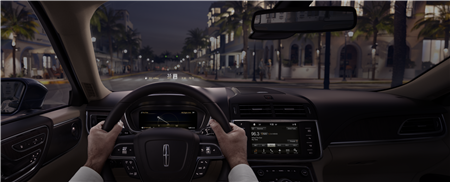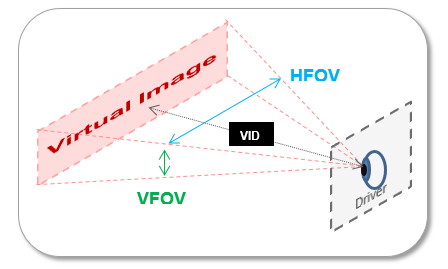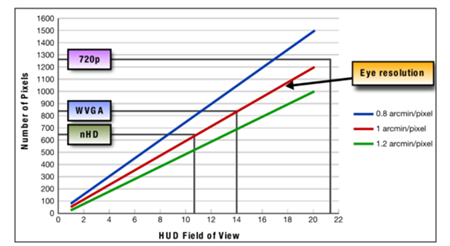SSZT941 october 2017
After a 15-year hiatus, Lincoln is back with the new Continental. The luxury vehicle has quite a few advanced features, including the unique new Head-Up Display (HUD) utilizing DLP® technology offered in its technology package.
Originally a technology reserved for aviation, HUDs have now found their way into some mid- to premium-class automobiles. These systems project graphics onto a car’s windshield so drivers can see relevant driving information while keeping their eyes on the road. The most basic systems display just a few small numbers, such as speed or RPM, while more advanced HUDs support navigation or warning notifications. Lincoln’s customer research has shown that drivers enjoy operating a vehicle with a HUD and actually prefer it to driving with an instrument cluster alone, as they can keep their attention devoted to the road. Car buyers who own a vehicle with a HUD tend to purchase new vehicles with HUDs.
This increased interest in HUDs for automotive applications led TI to develop HUD technology based on TI’s DLP technology. How is DLP technology helping bring HUDs to life? Let’s take a look.
 Figure 1 Head-Up Display Feature in the
Lincoln Continental
Figure 1 Head-Up Display Feature in the
Lincoln ContinentalDLP Performance Advantage for OEMs
DLP technology is enabling a new generation of wide field-of-view (FOV) HUDs that produce the industry’s brightest, most vivid images, easily delivering 15,000 candela per square meters (cd/m2) of brightness, a dynamic dimming range of 5,000-to-1 and 125% National Television System Committee (NTSC) color gamut performance that does not degrade over temperature. In addition, DLP technology does not require polarization of the light source, so drivers can wear their favorite pair of polarized sunglasses and still clearly see HUD images. In the nascent augmented reality market, DLP technology is enabling HUDs that can project virtual images up to 15-20m ahead, withstanding the solar load thermal challenges associated with long virtual images.
In the Lincoln Continental, the DLP3000-Q1 head-up display chipset consists of a 0.3-inch digital micromirror device (DMD) and DLPC120 DMD controller. Taking advantage of DLP technology’s reputation for excellent image quality, the Continental HUD is one of the brightest and largest currently in use today, with the projected images visible in bright ambient conditions. The total projection area on the windshield has a 10-by-2.5 degrees FOV (see Figure 2), with a resolution in excess of 70 pixels per degree. For comparison, a person with 20/20 vision can typically resolve a maximum of 60 pixels per degree (see Figure 3). Resolutions lower than 60 pixels per degree may seem distorted or jagged.
 Figure 2 HUD Geometry and Terminology
Figure 2 HUD Geometry and Terminology Figure 3 Someone with 20/20 Vision Can Resolve a Maximum 60 Pixels per Degree
Figure 3 Someone with 20/20 Vision Can Resolve a Maximum 60 Pixels per DegreeThe Lincoln Continental HUD shows a given area’s speed limit, the car’s current speed, adaptive cruise control information, number of miles until empty, phone information (such as caller ID), gear indication, turn signals, the current time and the outside temperature. It also offers the ability to show more advanced information such as navigation, lane-keeping assist, blind-spot warnings, cross-traffic alerts when backing up, and even a tachometer when driving in sport mode.
Customizable Display
Car manufacturers need to make in-vehicle displays customizable and space-efficient. The Continental HUD is designed to allow drivers to select and change which features they want to see projected on their windshield and what they’d rather view on their instrument cluster. The same information is not displayed in multiple places in the vehicle, and the driver has control of what they see where.
Lincoln designed the HUD in the Continental to prioritize the data displayed to keep information – and the driver’s eyes – where they need to be. Lower-priority information is located along the edges of the 16-inch display, while higher-priority data is projected higher up, making it more readily accessible.
In the Driver’s Seat with HUD
With the addition of the HUD in the 2017 Continental, Lincoln aims to enhance the driving experience by making information easier to see in the driver’s line of sight. By projecting relevant content on the windshield, Continental owners can keep their focus up and on the road, rather than down at their dashboard instruments.
The new HUD feature is available now in the 2017 Lincoln Continental and will be featured in the 2018 Lincoln Navigator later this year. Perhaps one day, HUDs will be standard in the automotive industry, following the path of the back-up camera and blind-spot detector.
Watch the below video showcasing the Lincoln HUD to see this technology in action.
Additional resources: